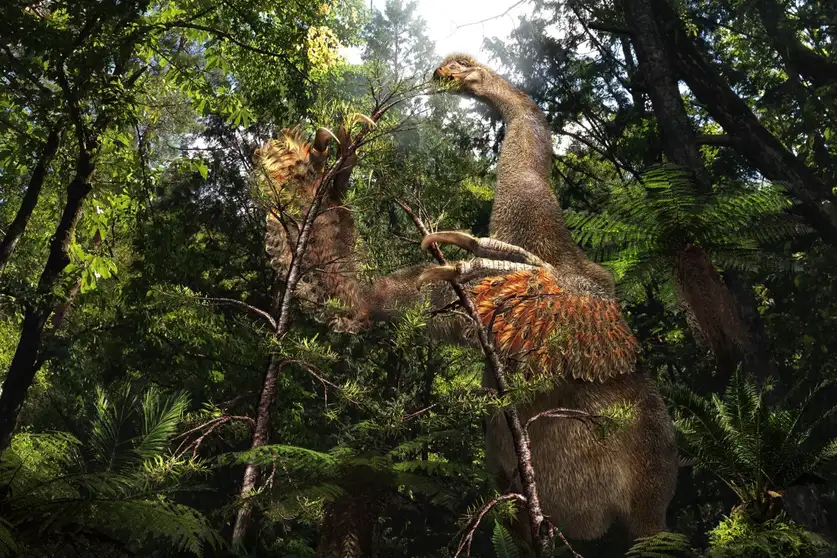Paleontologists have identified a new dinosaur species, _Duonychus tsogtbaatari_, discovered in Mongolia’s Gobi desert. What sets this 90-million-year-old herbivore apart is its massive, fully preserved claw—nearly 30 centimeters long—and its unusual two-fingered hands, a rarity among therizinosaurs. Researchers suggest the claws were adapted for grasping vegetation, offering a stronger, more controlled grip. The fossil, unearthed in 2012, includes parts of the pelvis, arms, and vertebrae, but its two-fingered anatomy and preserved keratin claw sheath make it a unique find. James Woodford at New Scientist has the full story.

Illustration of Duonychus tsogtbaatari, a theropod dinosaur from the Cretaceous Period (Masato Hattori)


